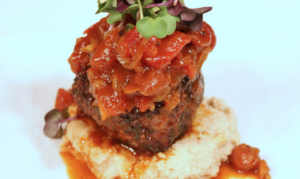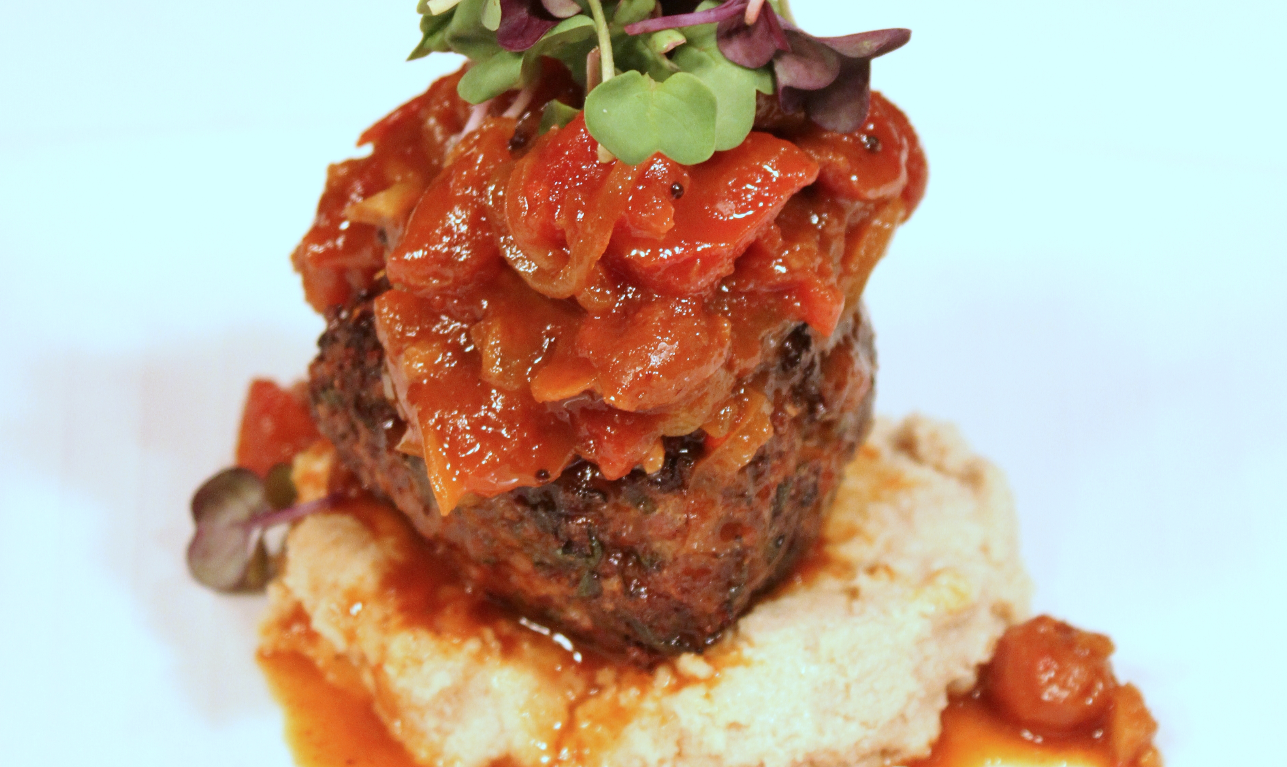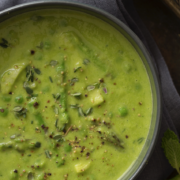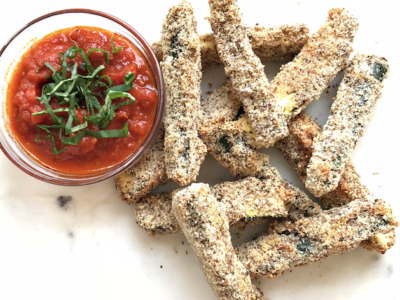 It started out as the single worst decision I ever made as a landlord. Of the final candidates for our two-bedroom apartment I picked the ones I thought were cool, the ones I wanted to hang with, instead of the ones who were the best credit risks. Eventually, the inevitable happened and we had to evict them.
It started out as the single worst decision I ever made as a landlord. Of the final candidates for our two-bedroom apartment I picked the ones I thought were cool, the ones I wanted to hang with, instead of the ones who were the best credit risks. Eventually, the inevitable happened and we had to evict them.
But it was not all bad; it was not an altogether lost investment. They were chefs, having just set up a restaurant kitchen for a client, and looking to open their own restaurant. More specifically, they were “raw food” chefs. It was the early 2000s and vegan cuisine was in the process of being taken to its logical extreme as “raw food,” complete with dubious but heavily hyped health claims. At its best – for example, the late-lamented Larkspur restaurant, Roxanne’s – it offered near-haute level cuisine in exciting, counterintuitive ways. At its worst it violated my motto: “keep an open mind, but not so open your brains fall out.” But it was intriguing and I saw it as something of an opportunity.
Their restaurant never got off the ground, of course, for reasons that had more to do with the reasons so many restaurants fail than anything about raw or vegan food. But in the course of working with them I learned a lot. I learned new techniques and approaches to food preparation like dehydration, fermentation, and an intriguing minimalism. And many of these I found directly applicable to addressing some of the challenges of kosher cooking.
The single favorite lesson I learned from that episode of my life was nut “cheeses.” I put that word in quotes because the thing it describes is in not a true “cheese.” Indeed, I firmly believe that using that word to describe the stuff denigrates it and consigns it to the end of vegan cuisine that feels it needs to pretend it is not that which it is.
What it actually is, of course, is something wonderful in and of itself: fermented nuts ground with various flavoring ingredients into a preparation that is, perhaps, more like a paté than a cheese. While this class of preparations comes out of the vegan and raw food worlds there is no reason it should not be used in a non-vegan context other than the fact that it has infrequently been used in that way.
But that is exactly what I had in mind. No good vegan would give any thought to using a cashew “cheese” in this way: pair it with a meatball and top it with a spicy tomato chutney. But the richness and acid notes of the cashew paté – hitting so many of the notes that might be supplied by a dairy product — pairs perfectly with the rich earthiness of the lamb and bulgur meatballs and the spicy sweetness of the chutney ties it all together.
I learned more than one lesson from those chef-tenants: (1) who not to rent to, and (2) how to make nut “cheeses.” I owe them a debt of gratitude for both (even though they still owe me the money for the rent they didn’t pay). But, at the end of the day, I do have this article to show for it.
Lamb and Bulgur Meatballs | Cashew Paté | Spicy Tomato Chutney
Ingredients:
For the Cashew Paté
- 1 cup raw cashews
- 1 tablespoon sherry vinegar
- 1 teaspoon Worcestershire sauce
- 2 teaspoons light soy sauce
- 1 teaspoon Kosher salt
For the Spicy Tomato Chutney
- 2 cups peeled, seeded, chopped tomato (can be good quality canned tomatoes)
- 1 teaspoon freshly grated ginger
- 1 medium onion, finely chopped
- 1 tablespoon fresh garlic, minced
- 1/3 cup raisins
- ½ teaspoon ground turmeric
- ¼ teaspoon cayenne pepper (or more)
- 2 tablespoons olive oil
- 4 garlic cloves, peeled
- 1 teaspoon whole cumin seeds
- ½ teaspoon black mustard seeds
- ¼ teaspoon fenugreek seeds
- 2 whole dried hot red peppers (arbol or japonaise, or fresh thai bird chiles)
- 1 cup brown sugar
- ½ cup apple cider vinegar
- Kosher salt to taste
For the Lamb Meatballs
- 1 cup cooked bulgur
- ½ cup chopped Italian parsley
- 2 tablespoons chopped fresh dill
- 1 shallot, minced
- 2 garlic cloves, minced
- Kosher salt and freshly ground black pepper to taste
- 1 pound ground lamb
- 2 large eggs
- 1 tablespoon grapeseed oil
For the garnish
- Radish sprouts or other sprouts or microgreens
- Make the Cashew Paté. Place the nuts in a bowl, cover with water and soak overnight. The next morning, strain the water from the cashews and place the nuts in the work bowl of a Vita Mix, other high-speed blender or food processor. Add the remaining ingredients. Starting on the lowest setting begin processing the nuts, gradually increasing the speed until the mixture achieves a smooth texture.
- Finish the Cashew Paté. Transfer the blended paté ingredients onto a cheese cloth, tie it off and suspend it over a bowl, allowing the cheese to ferment for a minimum of 8 up to a maximum of 24 hours. Transfer the paté to your refrigerator and allow it to rest for at least two hours to stop further fermentation. Refrigerate (and use) the cheese for 5-7 days.
- Cook the Spicy Tomato Chutney. Place the tomatoes, ginger, onion, minced garlic (not the whole garlic), raisins, turmeric, cayenne and salt in a bowl, and mix thoroughly. Heat the oil in a heavy sauce pan over medium heat. Add the garlic cloves, stir and fry until lightly brown. Add the cumin, mustard, and fenugreek and allow to sizzle for about five seconds before adding the red peppers. They should puff up and darken. Add the tomato mixture (it will splatter when it hits the hot oil). Add the brown sugar and apple cider vinegar. Stir and cook on medium heat for 15 minutes, or until the liquid is reduced. This recipe should yield about 1 cup of chutney.
- Make the Lamb Meatballs. Preheat the oven to 375° Fahrenheit. Soak bulgur in 2 cups water for 2 minutes; drain through a fine sieve. Combine bulgur and next 7 ingredients (bulgur through 2 minced garlic cloves). Cover and chill 30 minutes. Shape lamb mixture into 18 (1-inch) balls.
- Saute the Meatballs. Working in batches (if necessary), add the meatballs and sear until browned on all sides, about 5 minutes. Transfer the balls to a hotel pan and roast in the oven until cooked through, about another 5 minutes.
- Plate the Dish. Plating depends on whether you are using the dish as an appetizer or main course. If the former, use one to two meatballs per plate. If the later, use three to four. Place each meatball on a circle of cashew pate. Top each meatball with a dollop of tomato chutney and garnish with sprouts or microgreens.










Comments